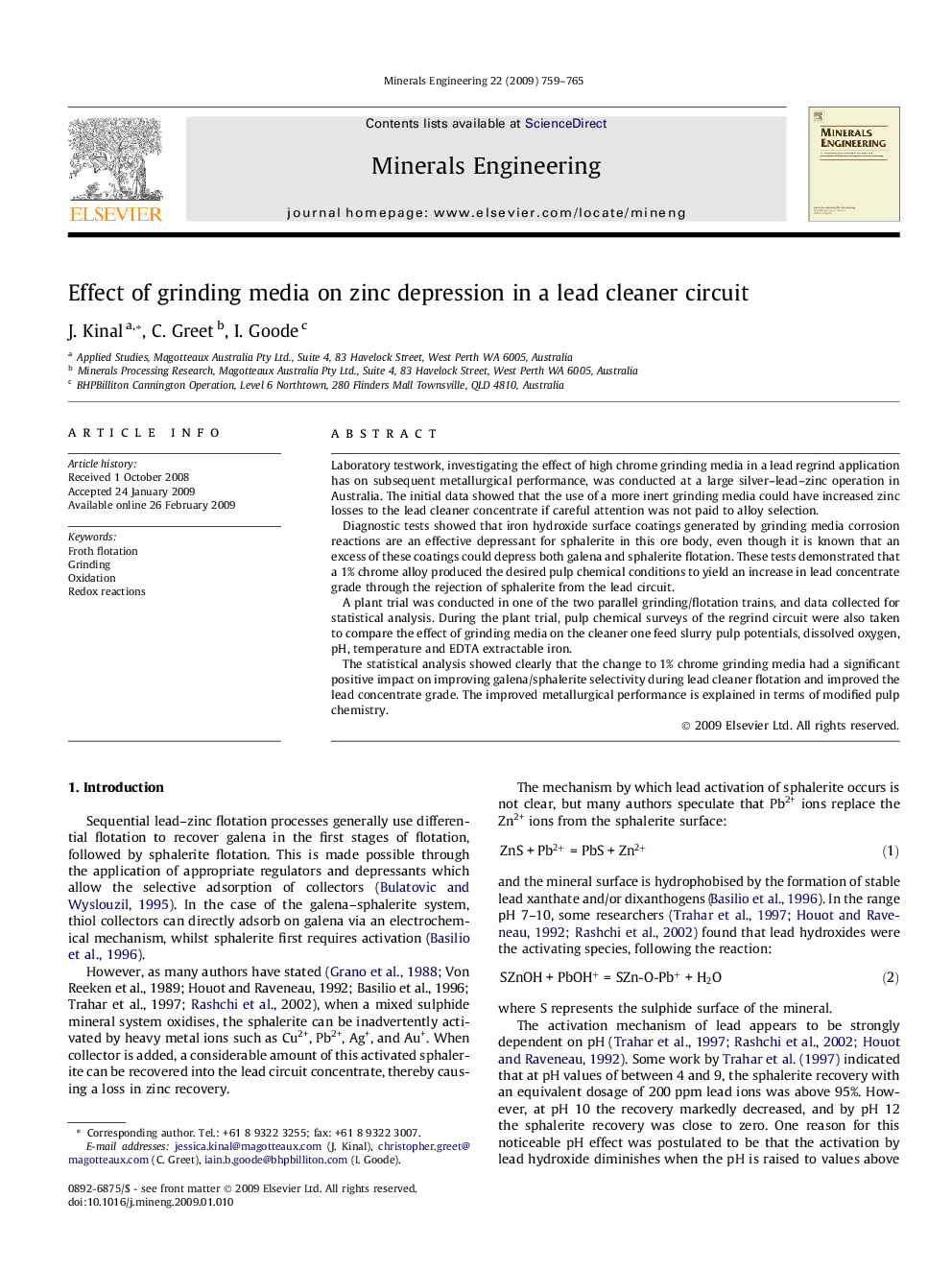| Article ID | Journal | Published Year | Pages | File Type |
|---|---|---|---|---|
| 234244 | Minerals Engineering | 2009 | 7 Pages |
Laboratory testwork, investigating the effect of high chrome grinding media in a lead regrind application has on subsequent metallurgical performance, was conducted at a large silver–lead–zinc operation in Australia. The initial data showed that the use of a more inert grinding media could have increased zinc losses to the lead cleaner concentrate if careful attention was not paid to alloy selection.Diagnostic tests showed that iron hydroxide surface coatings generated by grinding media corrosion reactions are an effective depressant for sphalerite in this ore body, even though it is known that an excess of these coatings could depress both galena and sphalerite flotation. These tests demonstrated that a 1% chrome alloy produced the desired pulp chemical conditions to yield an increase in lead concentrate grade through the rejection of sphalerite from the lead circuit.A plant trial was conducted in one of the two parallel grinding/flotation trains, and data collected for statistical analysis. During the plant trial, pulp chemical surveys of the regrind circuit were also taken to compare the effect of grinding media on the cleaner one feed slurry pulp potentials, dissolved oxygen, pH, temperature and EDTA extractable iron.The statistical analysis showed clearly that the change to 1% chrome grinding media had a significant positive impact on improving galena/sphalerite selectivity during lead cleaner flotation and improved the lead concentrate grade. The improved metallurgical performance is explained in terms of modified pulp chemistry.
